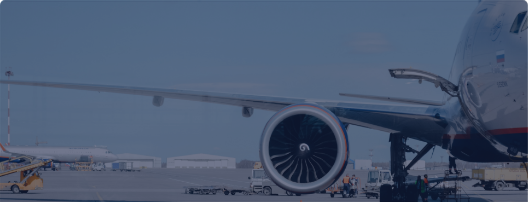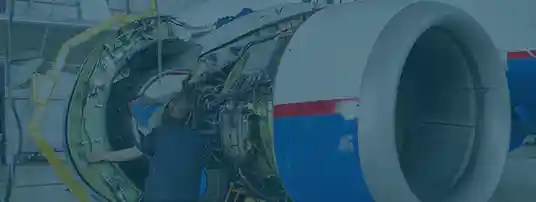Posted on November 5, 2025 linda strong commercial aircraft
Commercial aviation is recognized as one of the safest forms of travel across the globe, with airlines relying on a complex array of advanced systems and modernized technologies to maintain flight safety across increasingly crowded skies. Among the many solutions at the disposal of operators, the collision avoidance system in particular stands as one of the most crucial technologies with its role as a safeguard against midair conflicts.
As global air traffic continues to expand, airlines must ensure that any equipment installed aboard fleets meets operational demands and complies with strict regulatory standards set by authorities such as the Federal Aviation Administration (FAA). To better understand the way in which airlines reliably source FAA-approved collision avoidance systems for their operations, read on as we outline such equipment in brief detail, discuss the importance of certification, and cover best practices for maintaining safety and compliance.
A collision avoidance system, formally referred to as a Traffic Collision Avoidance System (TCAS), is designed to detect and prevent midair collisions between aircraft during operations. Using transponder signals and real-time radar surveillance capabilities, the system is able to monitor surrounding airspace and identify potential conflicts by analyzing relative altitude, direction, and closure rate between aircraft. When a possible collision risk is detected, a TCAS will issue one of two alerts:
By continuously evaluating airspace conditions, collision avoidance systems enhance pilot situational awareness, reduce overall workloads, and provide a final line of defense against midair incidents, even when ground-based systems or air traffic control communications are unavailable or delayed.
With the grand importance placed on flight safety, all collision avoidance systems developed and operated in U.S. commercial airspace must meet FAA certification standards. These ensure that systems conform to rigorous design, performance, and interoperability requirements defined under Technical Standard Orders (TSOs) like TSO-C119 for TCAS equipment. Generally speaking, FAA approval indicates that a particular system:
Without FAA approval, airlines cannot legally install or operate these systems on aircraft. Therefore, sourcing certified components is not merely a regulatory obligation, becoming a fundamental operational necessity.
The process of sourcing FAA-approved collision avoidance systems is multifaceted, requiring careful collaboration between airline procurement teams, avionics engineers, and authorized suppliers. Airlines typically follow structured sourcing and evaluation steps to ensure quality, compliance, and consistent fleet performance.
Each type of aircraft and its operational environment will present unique requirements that dictate what form of collision avoidance systems may be most suitable. While not all-encompassing, airlines often evaluate factors like:
By defining these needs sooner than later, airlines can better narrow their sourcing scope to focus on equipment that most aligns with any technical and regulatory demands.
For peace of mind, airlines generally procure collision avoidance systems through FAA-certified manufacturers or distributors that are authorized to sell TSO-approved products. These entities are responsible for ensuring that all systems and components maintain traceability to their original production source and conform to FAA and OEM standards.
Certified manufacturers like Collins Aerospace, Honeywell, Garmin, and others are all recognized for producing FAA-approved TCAS solutions that integrate seamlessly into new and legacy aircraft alike, supporting construction and retrofitting needs. Airlines may also rely on authorized distributors to manage procurement logistics or support needs for parts no longer in production, ensuring that systems remain in compliance with certification requirements.
Airlines must also consider the long-term maintenance and supportability of their selected systems, being sure to evaluate:
A sourcing strategy that includes long-term vendor support will generally help airlines reduce the potential of downtime and lower operational costs over the lifecycle of the system.
Before installing any particular system, airlines will perform comprehensive audits of documentation and certification data to verify system authenticity and airworthiness. This typically includes:
Through rigorous verification processes like these, airlines can maintain adherence to both FAA and internal quality management standards.
For airlines and maintenance organizations seeking the most dependable sourcing options for FAA-approved systems, working with a trusted distributor is critical. This is where Aviation Sourcing Solution comes in, our database connecting customers with top-quality collusion avoidance system parts and other avionic solutions that trace back to leading manufacturers you can trust. With a plethora of parts ready for purchase across our website, begin exploring at your leisure and make use of our online Request for Quote (RFQ) service to secure options on any desired items.

 The only independent
The only independent



“We Proudly Support Intrepid Fallen Heroes Fund that serves United States Military Personal experiencing the Invisible Wounds of War : Traumatic Brain Injury (TBI) and Post Traumatic Stress (PTS). Please visit website (www.fallenheroesfund.org) and help in their valiant effort”.
We Hope that You Will Visit Us Again the Next Time You Need Aircraft Parts and Make Us Your Strategic Purchasing Partner.
Request for Quote